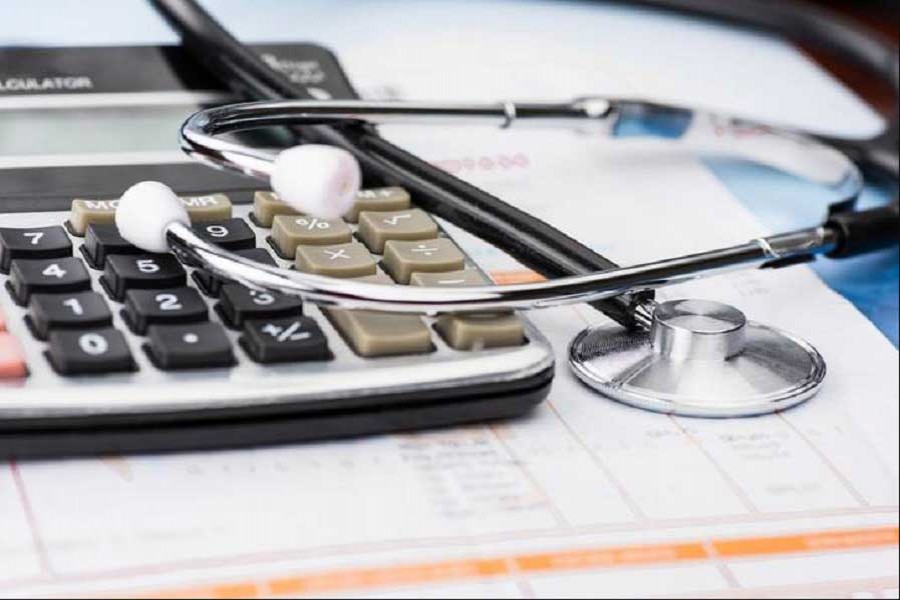Both the government-run hospitals and private sector-operated healthcare facilities have often come under fire for the high costs and indifferent quality of services. In such an avalanche of criticism, an important issue of burden-sharing in respect of health expenditure between the service providers and the individual recipients has been kicked into the long grass.
But no more! The data released by the report on 'Bangladesh National Health Accounts 1997-2015' has been an eye-opener to a startling but nonetheless palpable gulf between the health costs incurred by the government and those borne by individual citizens. It has been found out that patients' 'out-of-pocket' payment (OOP) for healthcare amounts to 67 per cent as against the government's paltry 23 per cent. The per capita health cost in urban areas was estimated at Tk 3,083 and that for the countryside was put at Tk 1,894.
Only four years back the citizens would have paid 63 per cent to the government's 27 per cent. Given the already back-breaking burden on the households to foot an increased health bill even by one per cent per annum is excruciating for the low-income groups. It is, however, noted that the non-governmental organisations (NGOs) and the donor institutions shoulder 10 per cent of the costs.
What particularly draws a flak is the fact that whilst the costs of healthcare are increasing, the government's expenditure in health sector is decreasing! Among the Saarc countries, Bangladeshis spend the most on healthcare. This points to a potential domestic health market that should be catered for with a vision for service.
Sixtyseven per cent of the health cost borne by the citizenry may not be the whole truth. There is an add-on in the form of medical tourism their compatriots undertake in India, Thailand, Malayasia, Singapore, Honk Kong, etc. Thus the foreign exchange component of the expenditure may need to be factored into national accounting.
Our poor people have to depend on public sector hospitals. But it's a pity that even there, the public have to spend from their pockets whereas they would go there in the hope for treatment free of cost. From medicines to doctors' fees to pathological tests exorbitant charges are made and realised. In the process, poor people are pauperised. Often they will be made to buy unnecessary medicines or undergo diagnostic tests or would be hauled up on an operation table just for the sake of making money .
The US-based Journal of Preventive Medicine and Public Health in an article published in February 2017, called for policy options for building a stronger financial support mechanism. It said: government should consider devoting more resource to provide free or subsidized care. In parallel with government action…. prudential and sustainable risk-pooling mechanism may help attract enthusiastic community-based health insurance plans.
It is an oft-expressed view of health professionals that a bigger allocation than 2.8 per cent of the gross domestic product (GDP) to the health sector be treated as an investment in human resource development.
It is not a tall order given that Bangladesh enjoys certain edges over other developing countries in such areas as a primary and secondary healthcare infrastructure, longer life span made possible through a curb on child mortality, increased health consciousness and above all, a strong pharmaceutical industrial base.
On a word of caution, the increase in the budgetary allocation to the health sector should be linked to a definitive success in curbing corruption, malpractice and waste.


